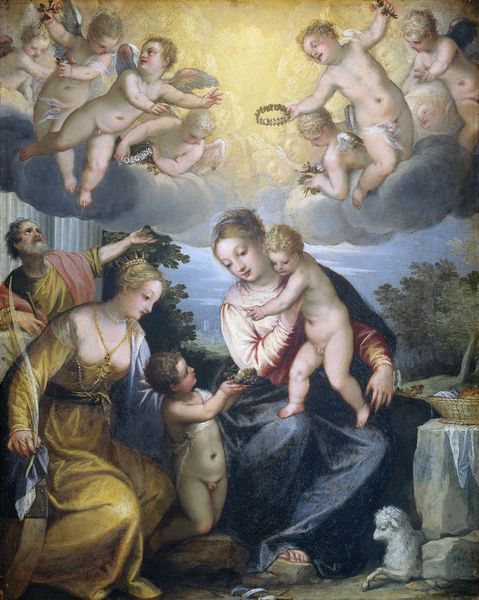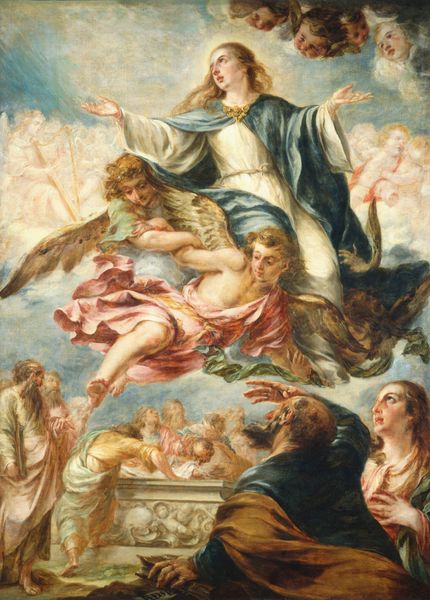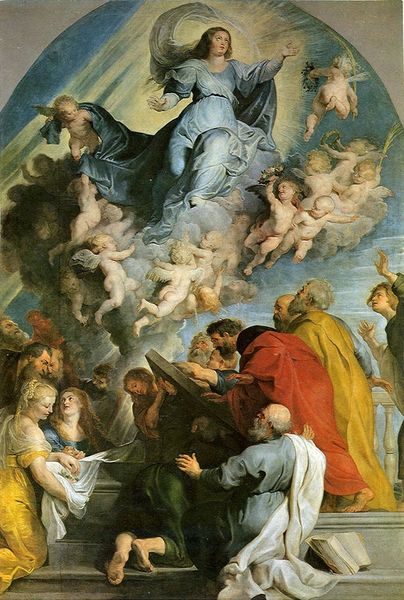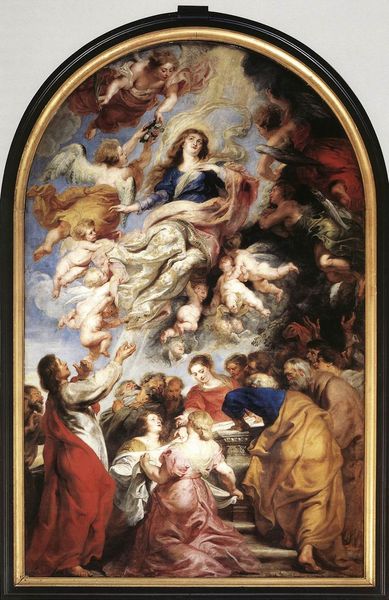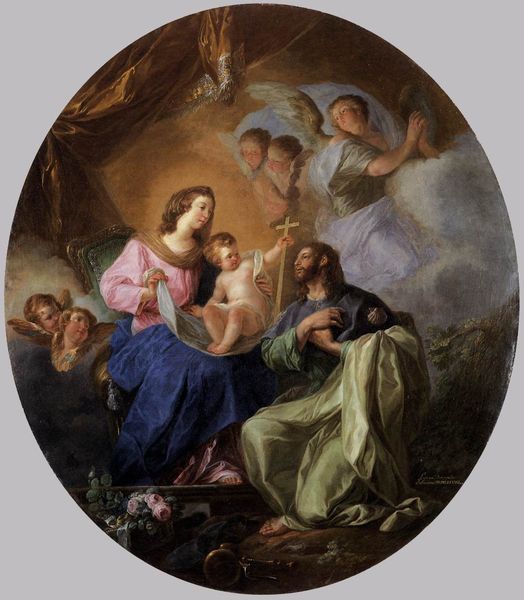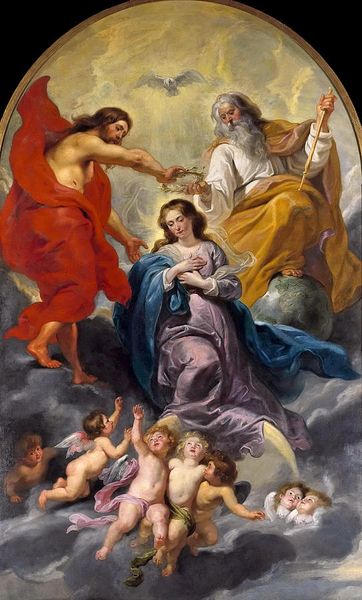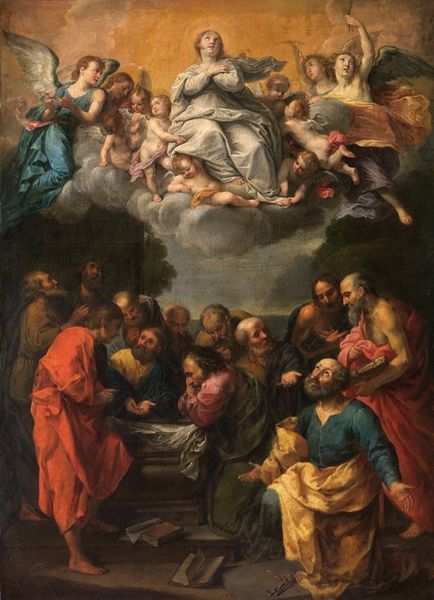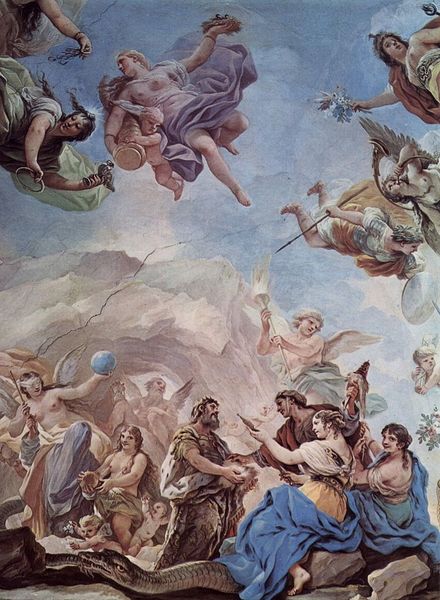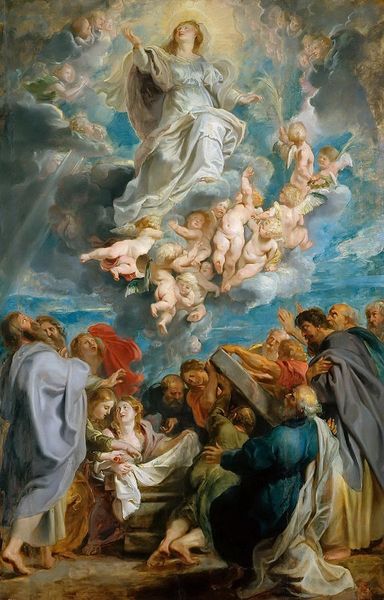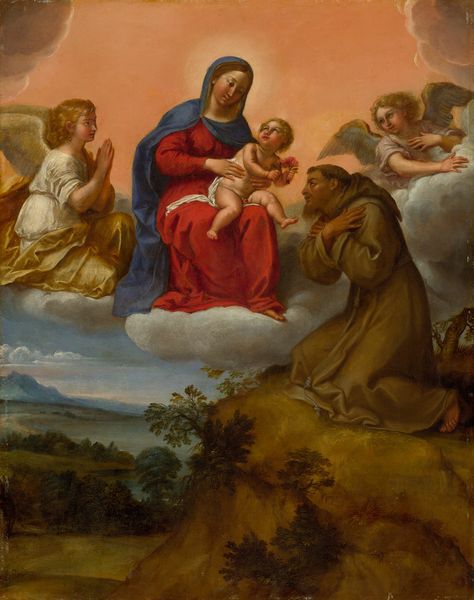
painting, oil-paint
#
portrait
#
venetian-painting
#
allegory
#
painting
#
oil-paint
#
landscape
#
figuration
#
11_renaissance
#
oil painting
#
christianity
#
mythology
#
history-painting
#
academic-art
#
christ
Copyright: Public domain
Paolo Veronese's 'Mystic Marriage of Saint Catherine' is a canvas brimming with life, likely painted in the latter half of the 16th century. The work immediately strikes us with its soaring architectural elements and the heavenly host of cherubs. The composition unfolds as an ascending spiral, starting from the lower left with angels making music and culminating in the celestial gathering above. Veronese masterfully employs colour to distinguish earthly from divine realms, using rich blues and reds for the mortals and softer, ethereal tones for the heavens. The eye is drawn to the Virgin Mary, the infant Christ, and Saint Catherine, who together form a semiotic triangle that embodies divine love and spiritual commitment. But consider too how Veronese challenges the very notion of Renaissance perspective. The painting's depth is flattened, pushing the figures closer to the picture plane, thus destabilizing the conventional hierarchy between the viewer and the sacred figures. In essence, the painting invites us to contemplate not just a religious scene but also the structures through which meaning is created and perceived. The dynamism isn't only aesthetic; it poses questions about our own interpretations and engagements with art.
Comments
No comments
Be the first to comment and join the conversation on the ultimate creative platform.
